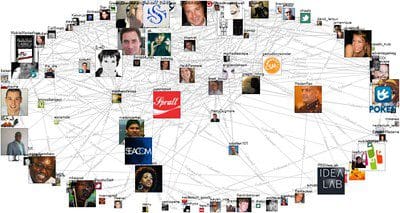
Favorite There is a clear view than knowledge lies in the “walls” and the “hallways” between the “rooms” of an organisation. Here are some of the implications of this view for Knowledge Management. Image from wikimedia commons This blog post was inspired by a post from Nancy Dixon entitled Where Is
Read More
 Shared by Nick Milton April 4, 2022
Shared by Nick Milton April 4, 2022
Favorite Here are 4 reasons why stories can be a very powerful way to share knowledge. I often use the US Wildland fire lessons center as a great example of knowledge sharing. Their portal contains lessons, advice, a blog, summaries of incidents, and links to videos hosted on their youtube
Read More
 Shared by Nick Milton January 29, 2021
Shared by Nick Milton January 29, 2021

Favorite Easier to share can mean harder to learn Image from wikimedia commons A common mistake companies often make when it comes to setting up knowledge sharing systems is to make it as easy as possible for people to share. I know that doesn’t sound like a mistake, but let
Read More
 Shared by Nick Milton November 2, 2020
Shared by Nick Milton November 2, 2020

Favorite I presented this Boston Square last week to talk about 4 styles of knowledge transfer. Here’s how the KM team can help with each. The Boston Square looks at four modes of knowledge transfer within KM, differentiated by Push and Pull, and Documented/Undocumented knowledge. Any balanced KM program will
Read More
 Shared by Nick Milton October 26, 2020
Shared by Nick Milton October 26, 2020

Favorite Here is a useful Boston Square which might help you unpack some of the assumptions behind knowledge transfer. Knowledge transfer is a term everyone uses, but often we can bring baggage and assumptions to the term. What exactly do we MEAN by transferring knowledge? How is it transferred,
Read More
 Shared by Nick Milton October 21, 2020
Shared by Nick Milton October 21, 2020

Favorite A reprive from the archives – an overview of Connection and Collection as dual components of KM. Image by Marc Smith on Flickr There are two main mechanisms for supporting the flow of knowledge in an organisation – Connecting the people, or Collecting the content. These are sometimes seen
Read More
 Shared by Nick Milton September 10, 2020
Shared by Nick Milton September 10, 2020

Favorite Imagine you have identified some lessons or new knowledge within a work team. How do you pass them on? There are 8 different contexts which determine how you might approach this. I am a great believer in tailoring your approach to circumstances, and the circumstances you need to consider
Read More
 Shared by Nick Milton August 26, 2020
Shared by Nick Milton August 26, 2020

Favorite How do Japanese organisations approach best pratice sharing? Let’s look at Yokoten Workers exchanging knowledge (genchi gembutsu) Japan, exemplified by Toyota, has developed its own flavour of Knowledge Management. Together with a local focus on knowledge development (Kaizen), knowledge documentation (A3) and the behaviours of Hansei we can add
Read More
 Shared by Nick Milton August 13, 2020
Shared by Nick Milton August 13, 2020

Favorite How do Japanese organisations approach best pratice sharing? Let’s look at Yokoten Workers exchanging knowledge (genchi gembutsu) Japan, exemplified by Toyota, has developed its own flavour of Knowledge Management. Together with a local focus on knowledge development (Kaizen), knowledge documentation (A3) and the behaviours of Hansei we can add
Read More
 Shared by Nick Milton August 13, 2020
Shared by Nick Milton August 13, 2020

Favorite In an interesting New Scientist article, Harry Collins (author of “Tacit and Explicit knowledge“) describes three types of Tacit Knowledge. Image from wikimedia commons We know about the concept of tacit knowledge, which originally was described as knowledge which cannot be expresses (although often nowadays people use the term for knowledge
Read More
 Shared by Nick Milton July 30, 2020
Shared by Nick Milton July 30, 2020
![]() Shared by Nick Milton April 4, 2022
Shared by Nick Milton April 4, 2022








